Written by Brent Huntley in ATVs
Buying new tires for your ATV or UTV can be a frustrating process. There are so many options. You have to figure out the size you want (see why some people like different sized tires in the front), pick a pattern, knob size and tread depth. While I was working on our awesome guide to picking the right tires for your ATV, the thought came to me as to whether you can use car or other vehicle tires on your ATV and whether that might save you some money or make it better for street use. With that thought in mind, I started doing some research to see if it was possible.
Can you use car tires and wheels on an ATV? Technically, you could, with a lot of work and modifications or some serious research and hunting, put car tires on an ATV, but practically, you cannot use car tires interchangeably on your ATV.
The biggest issue with trying to put car tires on an ATV is that most wheels simply do not fit. The lug nuts are not arranged in the same location on car wheels as ATV wheels so you cannot fit the wheel on without making modifications.
The reason most people wonder if they can put car tires on their ATV is to save money. However, the desire to save money is usually coupled with a specific goal as well. Most of the time, it is someone wanting to make their ATV street legal or to just get tires that are not going to wear out driving on the streets. Other times where someone may want to save money by using car tires are when they need a second pair of tires for special conditions, like studded tires, or not wanting to wear out expensive tires for frequent, but mundane, use. The problem is that it is hard to actually save money using car tires because the modifications can take a lot of work or extra money such that it is usually going to be easier and cheaper just to get ATV tires that will fit your goal.
If you really want to put car tires/wheels on your ATV, there are some ways to do it. If you use any of these methods, you will want to check your clearances first to make sure the tire will actually fit. You want to make sure the tires are going to fit underneath your fenders and that you aren’t going to cause any issues to your suspension as a starting point.
If you use any of these methods, you will want to check your clearances first to make sure the tire will actually fit. You want to make sure the tires are going to fit underneath your fenders and that you aren’t going to cause any issues to your suspension as a starting point.
Probably the easiest way to make car wheels work on your ATV to buy spacers, on ebay or somewhere else, that convert the bolt pattern on the car wheels to that of your ATV.
If you get some decent luck, you can find some car tires that will fit on your ATV wheels. This can be a bit of a pain as you will have to mount the tire yourself, which is fine if you know what you are doing, but I wouldn’t recommend it unless you already know what you are getting into.
If you are willing to do a bit of hunting or get really lucky, there are certain car models that have wheels that will fit some ATV models. I have never tried these, but I have heard that the wheels from some old Mustangs, Civics, Geos, 250X or Escorts will fit some ATVs. You will want to check the bolt pattern for your specific ATV, but many ATVs have a 4×110 or 4×100 bolt pattern so those are the patterns you would usually look for.
You will want to check the bolt pattern for your specific ATV, but many ATVs have a 4×110 or 4×100 bolt pattern so those are the patterns you would usually look for.
If you are super good with tools, you can manufacture your own spacers, like the guy in the video below. I have no advise whatsoever on this as it is over my head. I would happy spend the money to not have to do this.
https://www.youtube.com/watch?v=uK-P2D28obM
If your goal is to just get a good tire for riding on paved streets and don’t want to deal with the hassle of one of the above options, there are some great ATV tires that are designed for street use. A great starting point is to look over our guide to ATV tires as there is a bit in there about street tires.
The big things you will get out of a street tire is better grip and traction on paved surfaces and thicker rubber that will last longer. The easiest way to see if the tires are good for paved streets, just check to see if the tires are DOT-approved.
Below are some of our favorite street tires:
Finally, if you are working on getting your ATV street legal, we have some great material that will help get you there. First, you will want to check out our street-legal guide that has specific information on whether and how you can get street legal in your state. Next, a look at our helpful guide to making your ATV street legal is worth the look to explore what else you need to get done.
My New Favorite Accessory for Winter Riding
Over the past several months, as the weather has gotten cooler, I have been testing out the Venustas Heated Vest for my cold-weather photography. I wrote all about it over at Photography &...
Continue Reading
link to How To Use An ATV SpreaderHow To Use An ATV Spreader
One of the greatest things about summer is yard work.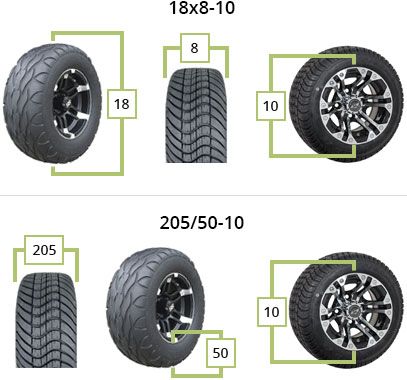 As the heat and humidity rise, so do the plants and flowers. The advent of technology has made seeding and fertilizing, a job that used to...
As the heat and humidity rise, so do the plants and flowers. The advent of technology has made seeding and fertilizing, a job that used to...
Continue Reading
Changing the tire on your ATV or side by side is a pretty straight forward process. There are some specialty tools that can make the job easier, but you can also accomplish a tire change on your own with some cool little tricks.
The hardest part about mounting a tire is getting the old tire off the rim and the new tires on. There’s a couple ways to go about this and some tips to make your life easier. Balancing the ATV tire is really only necessary if you’ll be getting up to speeds over 45 – 50 mph.
Here’s the steps you’ll use to remove the old tire and mount the new tire, don’t worry I’ll go into more detail on how to do each of these step by step.
Always start with safety when performing maintenance on your machine. It’s best practice to wear gloves and eye protection when working on your quad.
It’s best practice to wear gloves and eye protection when working on your quad.
First off, get the wheel off the quad and deflate the tire. It’s easier is loosen the lugs a little bit before you jack the quad up. Loosen and remove the lugs in a criss-cross pattern, the same way you would install them. Once you have the wheel off the ATV it’s time to deflate the tire for removal.
To deflate the tire, remove the cap and release all the air in the tire. Most tire pressure gauges will have a little notch on one side, that you can use to push in on the valve stem to release the air in the tire.
Or you could always use a screw driver or punch tool, basically you just need to push down on the valve stem to release the air somehow. Once all the air is released from the tire, you can use a valve remover tool to get the valve cores out.
Here is a link to a Tire Valve Stem Tool Remover & Installation Kit on Amazon. This kit has everything you need to deal with the valve cores of the tires. I highly recommend getting a tool like this if you ever plan on doing any type of maintenance to your tires.
This kit has everything you need to deal with the valve cores of the tires. I highly recommend getting a tool like this if you ever plan on doing any type of maintenance to your tires.
You can try to remove the cores yourself with a wrench or something similar, but that option usually leads to damaging the valve cores beyond reuse. In fact, I’ve never seen this done successfully without a valve stem removal tool.
Once the tire has been deflated, it’s time to break the bead seal. This is sometimes the most difficult part of the entire process because the bead is set into the rim a lot more firmly on off-road tires than it is on car tires.
And to top it off, a lot of times there is some sort of bead sealer on the bead to keep the tire from popping off.
If you plan on changing a lot of tires, I suggest looking into getting a tire changer tool. This PowerLift Manual Tire Changer Base on Amazon is only about 55 bucks and makes this step so much easier.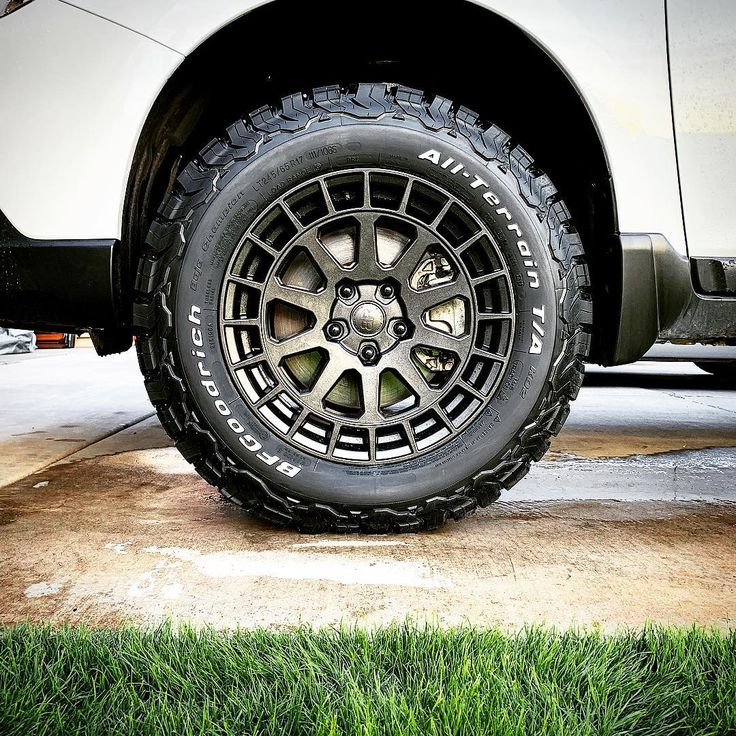 If you don’t want to spend the money, that’s ok, this can be done with basic garage tools as well.
If you don’t want to spend the money, that’s ok, this can be done with basic garage tools as well.
A popular option to break the bead is to put the tire on a piece of plywood, or something so the tire doesn’t dig into the dirt.
Then place a jack on the tire near the bead, then simply jack up into something heavy like a truck bumper or hitch.
Repeat this process around the tire on both sides in places where the bead is till set.
Or you could build your own homemade bead breaker with a couple 2x4s like in this picture here.
I would use a chain or something connecting to a piece of wood underneath the tire instead of a car as leverage, but that’s the fun of doing it yourself, use your imagination.
The whole goal of this step is to get the bead off the rim so you can remove the tire.
However inventive you’d like to get is up to you. I’ve seen people use a giant clamp to pop the bead off the rim before. You could use two pieces of 2×4 on each side of the tire and a ratchet strap to pull them together to press the tire off the rim.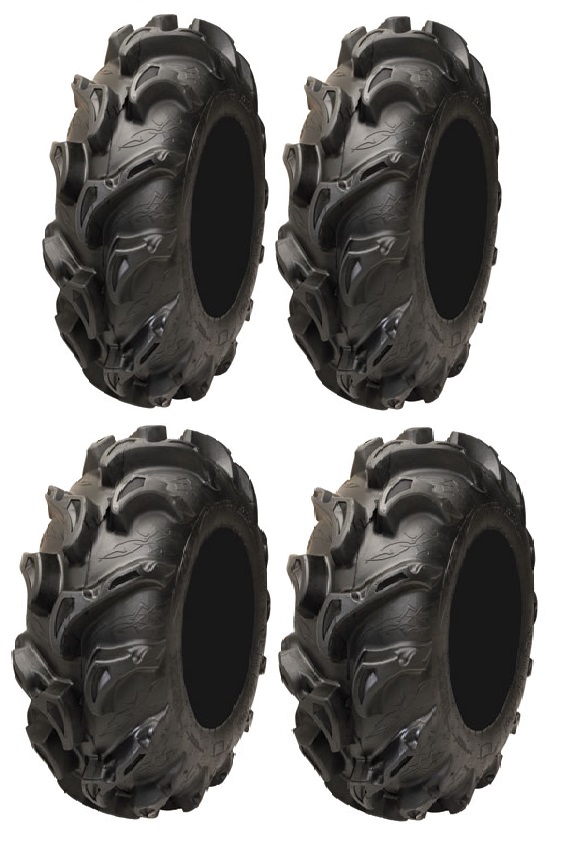
Now that you’ve got the bead of the tire unseated from the rim, it’s time to get the whole tire off the rim. This is sometimes called peeling the tire off the rim.
You’re going to want to take extra special care to peel the tire off the short side of the rim.
You can find the short side of the rim by looking at the depth on both sides of the wheel. The short side has a shallower depth and will be the easiest side to pull the tire off on.
The best tool for this step is a set of tire spoons or a tire changing tool set, like this Fasmov Tire Iron Tire Changing Tool Set. If you don’t have one of these, not to worry, they’re pretty cheap to buy a set, or you could just use a couple pry bars or something similar instead.
I would advise against a screw driver though, the larger ones may work pretty good, but be extra careful not to damage the tire or rim. Well, I guess you can damage your old throw away tires, but you need to do this later on to put the new tires on too.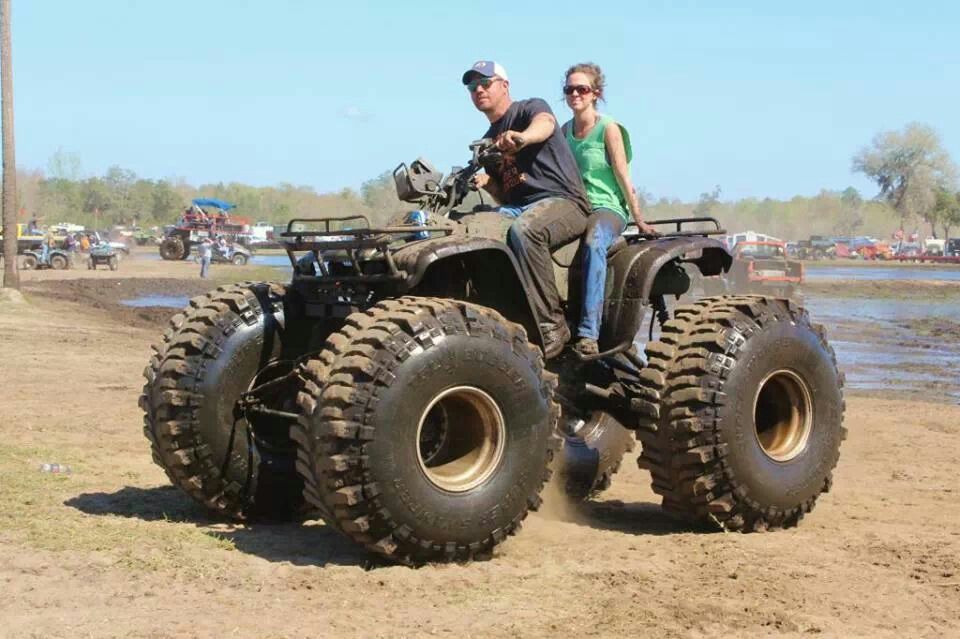
Start by pushing the tire down into the open area near the rim. Use your tire tool or pry bar to pull the tire up over the rim. It’s best to use the the tool like a lever, sticking the tool down so that just a piece is under the tire and pressing down to pop it over the rim.
Hold that piece of tire over the rim and use the tire tool piece with a lip to work your way around popping the rest of the tire over the rim. Like you see in the picture above. It’s easiest when you use all three tools in the kit because the middle tool will get freed up with each new section of tire you pop over the rim.
Eventually you’ll get to a point where you can just pull the tire off by hand. Then you’ll use one of the tire tools to simply pop the tire off the other side of the rim.
Now that you’ve got the old tire off, you’re going to want to clean the lip of the rim where new tire bead will sit. It’s important to clean this area really well to be sure you get a good fit with the new tire.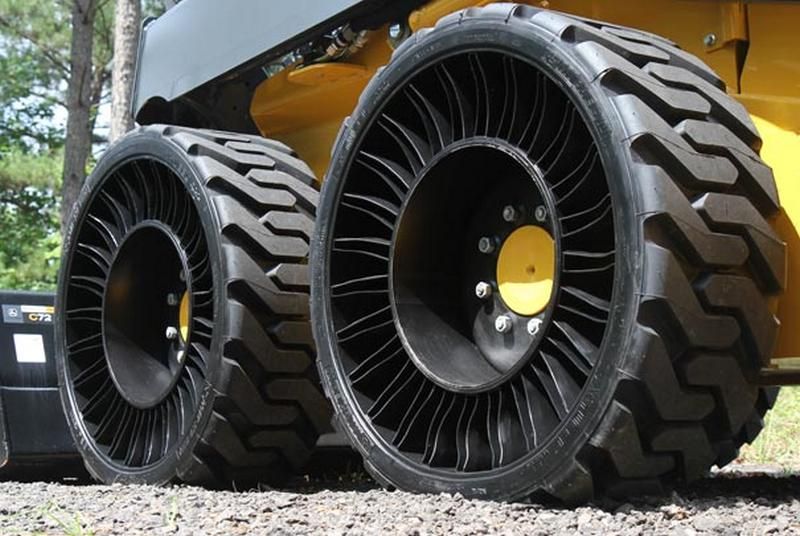
You won’t always need to use a bead sealer, but will always want to clean the lip of the rim. You will only need to use a bead sealer if you think the tire bead won’t seal well enough on the rim on it’s own.
This is usually only a concern if the tire is real beat up around the bead or if the rim is bent up and gashed to the point where the tire won’t seal on the rim.
If you can get away with not using a bead sealer, than I wouldn’t use it. It makes it harder to remove the tires next time you do a tire change anyways.
You will have to clean and lube the tire bead to help with mounting the tire on the rim. To clean it, just make sure the bead is free of debris and gunk. Usually a new tire won’t have dried up sealer or other stuff in the bead yet.
After you’ve made sure the tire bead is clean, it’s time to lube it up and put the tire on the rim. They do sell nice and fancy expensive tire lubes, but I’ve found that some soapy water works just as good.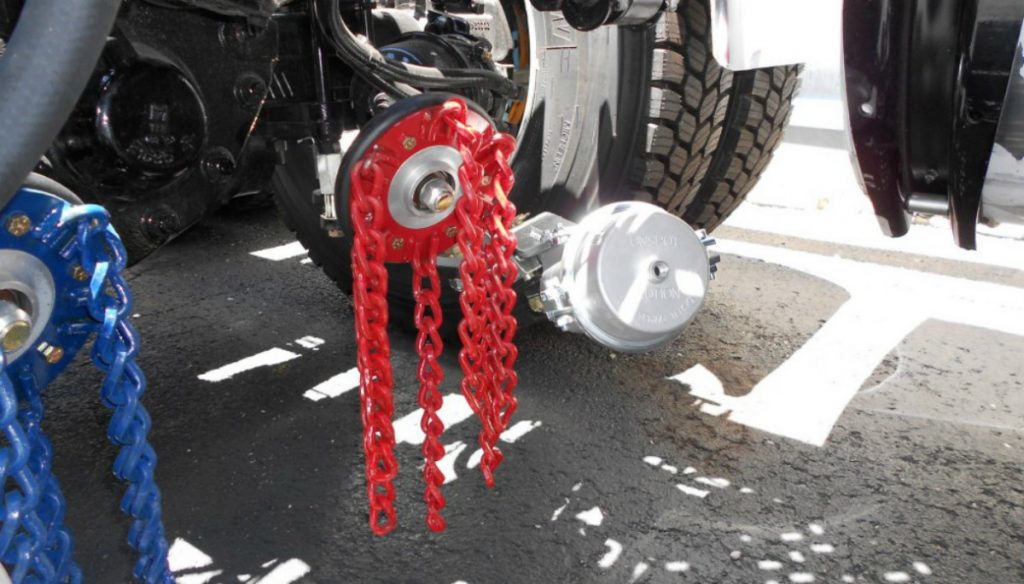 Lube both sides of the bead, inner and outer, if you don’t, it’s going to be really hard to get the tire on the rim.
Lube both sides of the bead, inner and outer, if you don’t, it’s going to be really hard to get the tire on the rim.
Now’s a good time to check tire direction. Most ATV and UTV tires will not be directional, but they do make tires that should only be put on a certain way. This is because the tires is designed with groves facing a certain direction to help with traction.
You could look at the side wall of the tire for an arrow, or just decide for yourself by looking at the tread which direction you want the tire to be mounted on the rim.
Now to get the tire on the rim, remember to start with the shallow side of the rim. Place the rim on the ground, on something that will keep it from sliding away from you, with the shallow side facing up. Now poke the bead part of the tire into the shallow side of the rim and press down on the tire until it pops onto the rim.
Ok, you’ve popped the tire onto the rim, now you need to get it seated and the bead lined up correctly. You can kneel down on one section of the tire and use the tire tool or pry bar to seat the rest of the tire into place, as you can see in the picture.
You can kneel down on one section of the tire and use the tire tool or pry bar to seat the rest of the tire into place, as you can see in the picture.
Try using your knee to keep the tire from popping back up on the other end, your free hand will help with this as well. After you get to a little more than half of the tire pryed onto the rim, it will be easy to just push it the rest of the way on.
Now that the new tire is on the rim, it’s time to set the beads on both sides of the tire. If you have a small portable air compressor for airing up tires, that might not be enough to seat the beads.
You can try inflating the tire with the core out, to help you get more air in the tire more quickly to seat the beads. Then once the beads are seated, put the cores, or valve stems in and inflate the tire.
You will usually need a higher powered air compressor to seat the beads. The even make special designed Tire Seating Blaster Inflator Air Compressors made specifically with enough power to seat the bead of the tire. That’s because a compact portable air compressor doesn’t have enough power to do it.
That’s because a compact portable air compressor doesn’t have enough power to do it.
Another popular option you could try is to spray starter fluid into the tire and light it with a lighter. The starter fluid burns all the air out of the tire and pulls the bead into place. To legally cover myself I am going to say to never do that. But, I’ve used this method plenty of times and it works like a charm.
Then once the bead is set, put the core back in and inflate the tire like you normally would using any air compressor you have. If you plan on riding at speeds over 35 mph, it’s a good idea to balance the tires at this point.
Check out my How To Balance ATV Tires article for the step by step instructions on how to balance your tires.
Sharing is caring!
How to choose the right tires for an ATV, we will understand in detail below.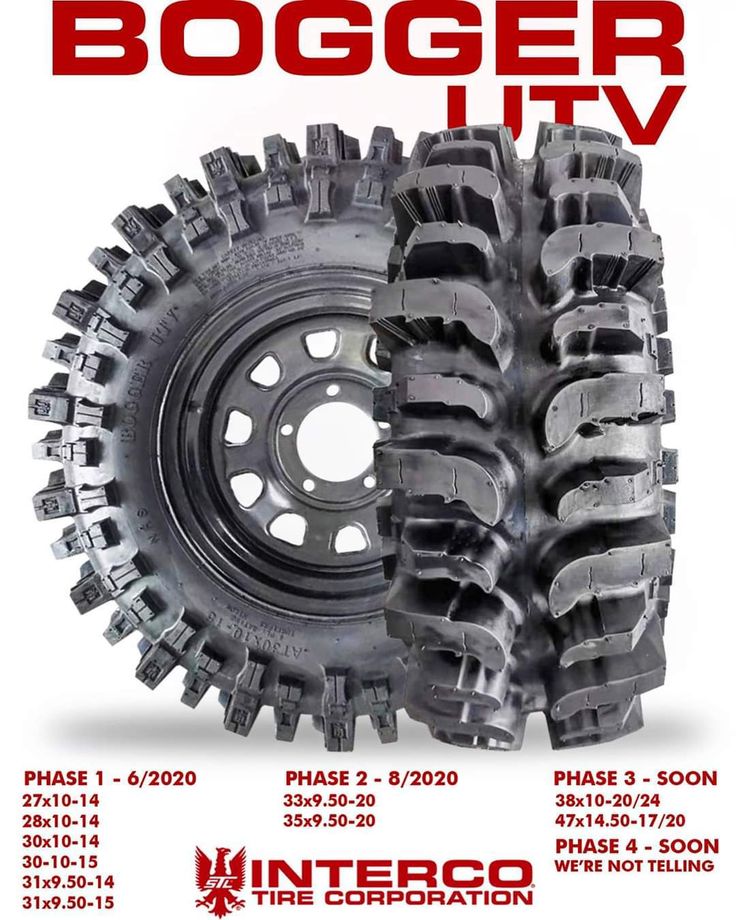
Off-road ATVs. But only in the basic configuration they are equipped with tires for driving on dry dirt roads. This is what most manufacturers do. If you plan to move through wetlands with no roads, you need specialized tires.
The wheels installed on the ATV must be suitable for the conditions of use. Otherwise, the technique will not reveal its capabilities. A journey into the forest or mountains may end in the first section of mud.
Even a person without experience can choose tires for an ATV. To do this, you need to know the basic parameters of tires:
Paying attention to these characteristics, you can buy high-quality and durable tires for your equipment.
The price of such goods is in a wide range. Depends on the brand, purpose, size.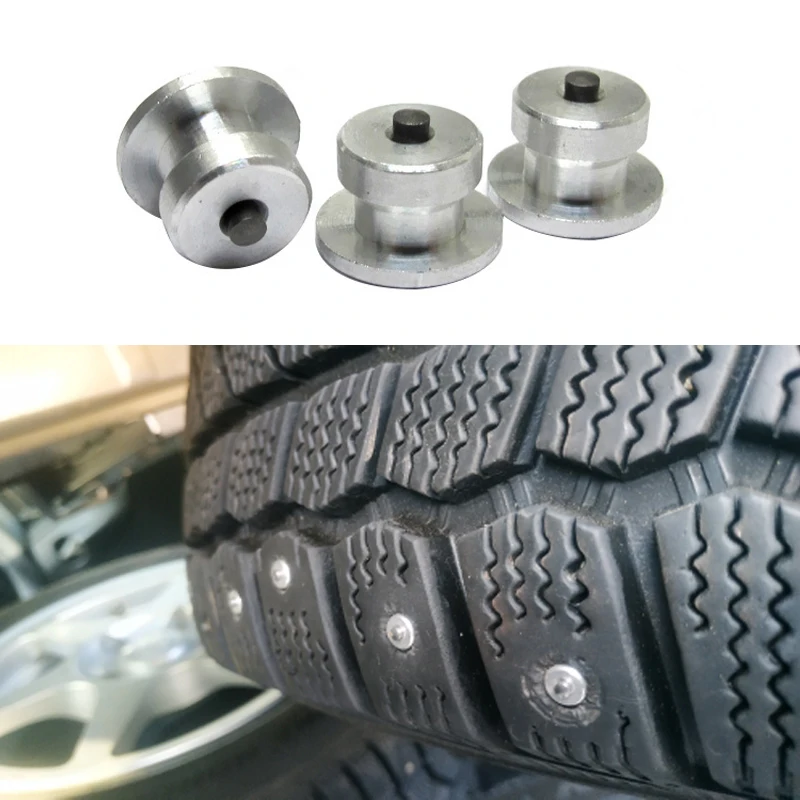 You can save money by making a purchase out of season and choosing products not of the most famous brand.
You can save money by making a purchase out of season and choosing products not of the most famous brand.
All tires on the market are divided into two large groups:
For a long time there was no alternative to diagonal. Their design consists of several layers of cord arranged diagonally. Strong, durable, adapted to harsh operating conditions.
For radials, the cord is laid from one side to the other. The central part is reinforced with metal cord. The production technology is complex, so the price is high.
What kind of tires to put on the ATV depends on the operation of the equipment. Diagonal is indispensable when driving off-road. Provides high-quality grip in difficult areas. Radial is relevant on hard surfaces. Allows for high speed.
Tires are distinguished by the type of tread pattern. The driving performance of motorcycles depends on it.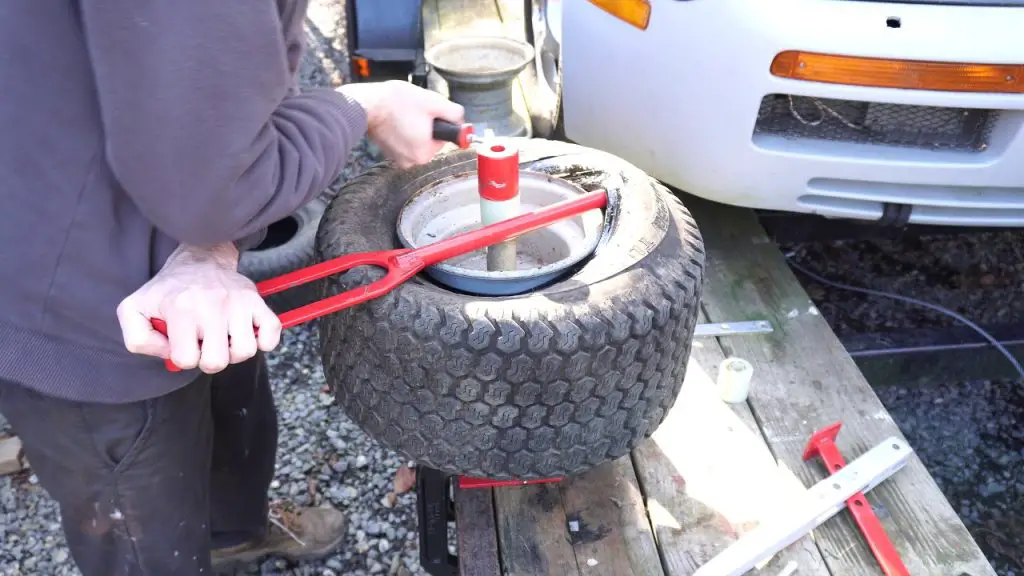 The following types are distinguished:
The following types are distinguished:
ATV universal rubber is in high demand. The tread pattern is made in the form of small ribs. Due to this, it provides stable grip on all types of road surface. The ability to self-cleaning is the main parameter in the selection process of universal tires.
Sports are made only for hard roads. The protector consists of small checkers. This is quite enough to ensure stability during high-speed driving.
Winter tires have a strong tread, complete with studs. You can increase the patency by installing chains.
ATV rubber for sand has unique blades. They quickly remove soil from the point of contact. The pattern consists of longitudinal blocks that scoop up sand and divert it to the side. Tires are specialized, operation is allowed only for its intended purpose.
Mud tires have herringbone tread pattern. This design eliminates slippage on a viscous road.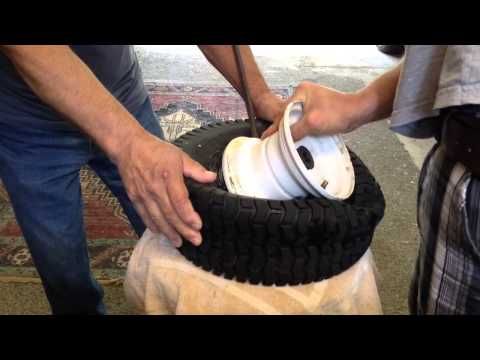 A tire with side hooks and powerful grooves is mounted on the rear wheel. This combination contributes to extreme driving.
A tire with side hooks and powerful grooves is mounted on the rear wheel. This combination contributes to extreme driving.
ATV tire pressure determines the size of the contact area with the ground. An under-inflated tire does not dig into the ground well. Pumped has minimal contact and poor cushioning. Each motorcycle manufacturer provides the necessary recommendations for optimal tire pressure. You can find information in the documentation for the ATV.
General advice is to keep the pressure in the range of 0.35-0.83 bar for off-road driving. On a flat dirt road we increase by 30%.
Wheel markings confuse many people. It has many different letters, numbers, signs. To choose the right product, you need to figure out what information the marking hides.
If NHS is present on the sidewall, the tire is designed for cross-country use. Operation is prohibited on normal roads. The remaining parameters are indicated in the English or metric system.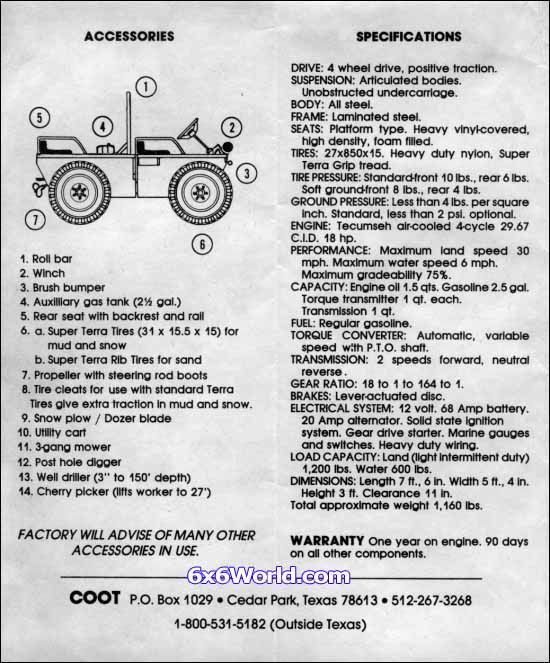
The English marking did not take root in the domestic market. It is rare, it is displayed like this - 25x8-12. Measurements are in inches. When deciphering it, we get the following dimensions of the ATV wheel. Height 25 inches, width 8, radius 12. Almost all ATV wheels are designed for 12 inch tires. Although there are models R13 and R14
The metric system is familiar to the domestic layman. It looks like this - 205/80R12. All dimensions are displayed in millimeters. Width 205 mm, 80 profile width/height ratio, R radial. After the figure shows the diameter.
Some manufacturers add an additional speed index. The letters N, T, J, C help to determine it. The speed index shows the maximum speed at which the tires retain their performance and stability on the road. It is forbidden to exceed the maximum threshold. Otherwise, the trip can end in big trouble.
Dozens of different brands offer their products on the quad tire market.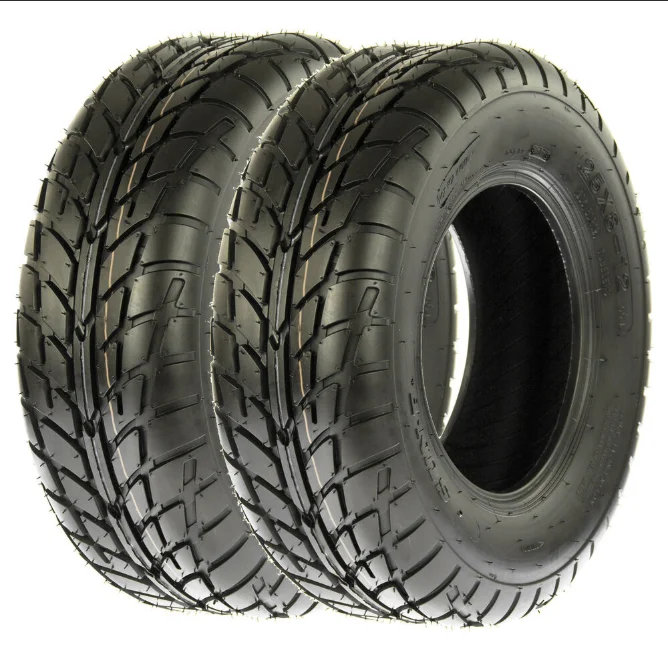 Everyone praises their products, highlights the advantages and skillfully hides the shortcomings. Do not rush and buy tires from leading manufacturers. Often their products have a strong margin, but the difference in quality with alternative options is minimal.
Everyone praises their products, highlights the advantages and skillfully hides the shortcomings. Do not rush and buy tires from leading manufacturers. Often their products have a strong margin, but the difference in quality with alternative options is minimal.
We recommend to pay attention to tires of the following manufacturers:
A favorite for owners of such equipment is Kenda. This brand delivers high quality products. Applies advanced technologies and technical solutions. Tires demonstrate high wear resistance, reliability. The manufacturer has several lines of tires designed for certain operating conditions.
Shinko rubber shows phenomenal durability. Choose for off-road driving and overcoming extreme areas. The company provides a wide range of models, which allows the consumer to choose the best option for themselves.
The Thai manufacturer Deestone is recognized worldwide. All products demonstrate resistance to damage, critical loads. Rubber has a huge resource. Like other companies, it offers tires for various purposes.
BKT manufactures radial and bias tyres. Maintains low prices for its products. The company focuses on tires for extreme driving conditions. With BKT tires you can drive everywhere, no obstacles will stop you.
Mitas European brand. Has a large production, cooperates with well-known experts. Produces many quad tires for various purposes. There are models for all modifications of ATVs.
Other manufacturers are not far behind those already presented. Everyone is trying to get ahead of the competition. Produce higher quality products. Choose the most relevant options.
You can buy high-quality ATV tires on your own, without seeking help from specialists. There are many models on the market, the price range is huge. Immediately look at the size of the ATV tires. You need to purchase an identical one.
You need to purchase an identical one.
Bias tires are a universal solution. Allows you to drive on all roads. The main thing is to choose the right type of protector. Decide in advance where you plan to ride, what conditions are there. Most specialized tires require strict adherence to operating rules. Otherwise, they will quickly exhaust their resources. We monitor the pressure in the tires of the ATV. You need to check before every trip. If this is not done, tread wear increases, traction with the coating deteriorates.
The manufacturer is important if the budget is not limited. Otherwise, we carefully study all available models, characteristics. After spending a little time, you will find rubber with the best combination of price and quality. Remember, properly selected tires are the key to the safe operation of an ATV.
05/17/2018
The numbers written on the side of the rubber tire tell the owner of the ATV everything that interests him.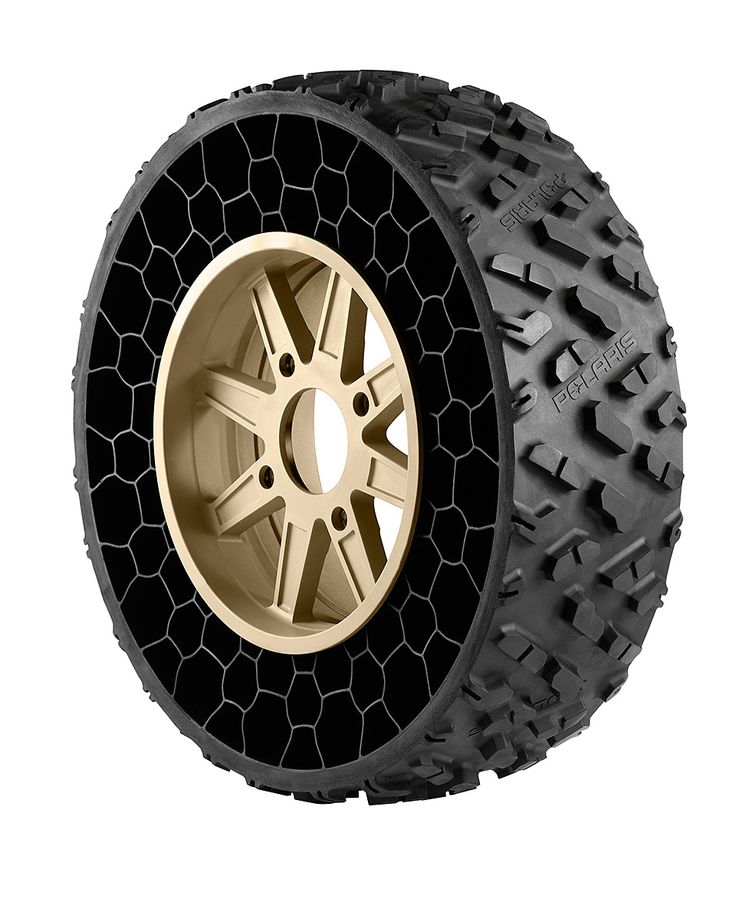 And if you are for some If you don't know what these mysterious numbers mean, then you can be mistaken when choosing the next set of tires. But tires directly determine whether it will go technique further or not. So, in this article you will close all the questions on about the decoding of size ATV tire .
And if you are for some If you don't know what these mysterious numbers mean, then you can be mistaken when choosing the next set of tires. But tires directly determine whether it will go technique further or not. So, in this article you will close all the questions on about the decoding of size ATV tire .
All tires have their own basic parameters - this is the width, height and diameter. The value of these parameters is mainly measured in inches. Exists two units:
1) If you have ATV, then this is for you. English version is the most common number system that is used when determination of tire dimensions on ATVs. All measurements here are in inches. (1 inch equals 2.54 cm). For example, the size indicated in English classification looks like this - 25x8x12 . Let's take a closer look at the meaning of each digit:
- The first digit 25 shows the height of the tire in inches;
- The second digit 8 indicates the width of the tire in inches;
- The last, third digit 12 indicates the diameter of the wheel disk, it is also measured in inches. Disc diameter on each ATV can be different. Therefore, be careful before you buy tires for ATV, see what regular disks are installed on your vehicle.
Disc diameter on each ATV can be different. Therefore, be careful before you buy tires for ATV, see what regular disks are installed on your vehicle.
And a very important point worth noting. Often our customers ask themselves: “If I have a tire size of 20x10x10, can I put instead of them 20x11x10? The answer is yes. First, you can put rubber on regular wheels with a size exceeding 1 inch in height and width. Secondly, if you want tires even wider, then for this you will need to buy other disks. But again, there are limitations. On discs of other diameters, you can install rubber, the largest is only 2 inches in height and width.
These two rules must be strictly observed, otherwise, if you try to put tires of an unacceptably large size, this may adversely affect on a quad bike. After all, the rubber will be larger and, accordingly, heavier, which does not fit the technical parameters of the ATV. In production ATVs take into account all the characteristics, so manufacturers of ATV equipment I don't recommend using bigger tires at all.